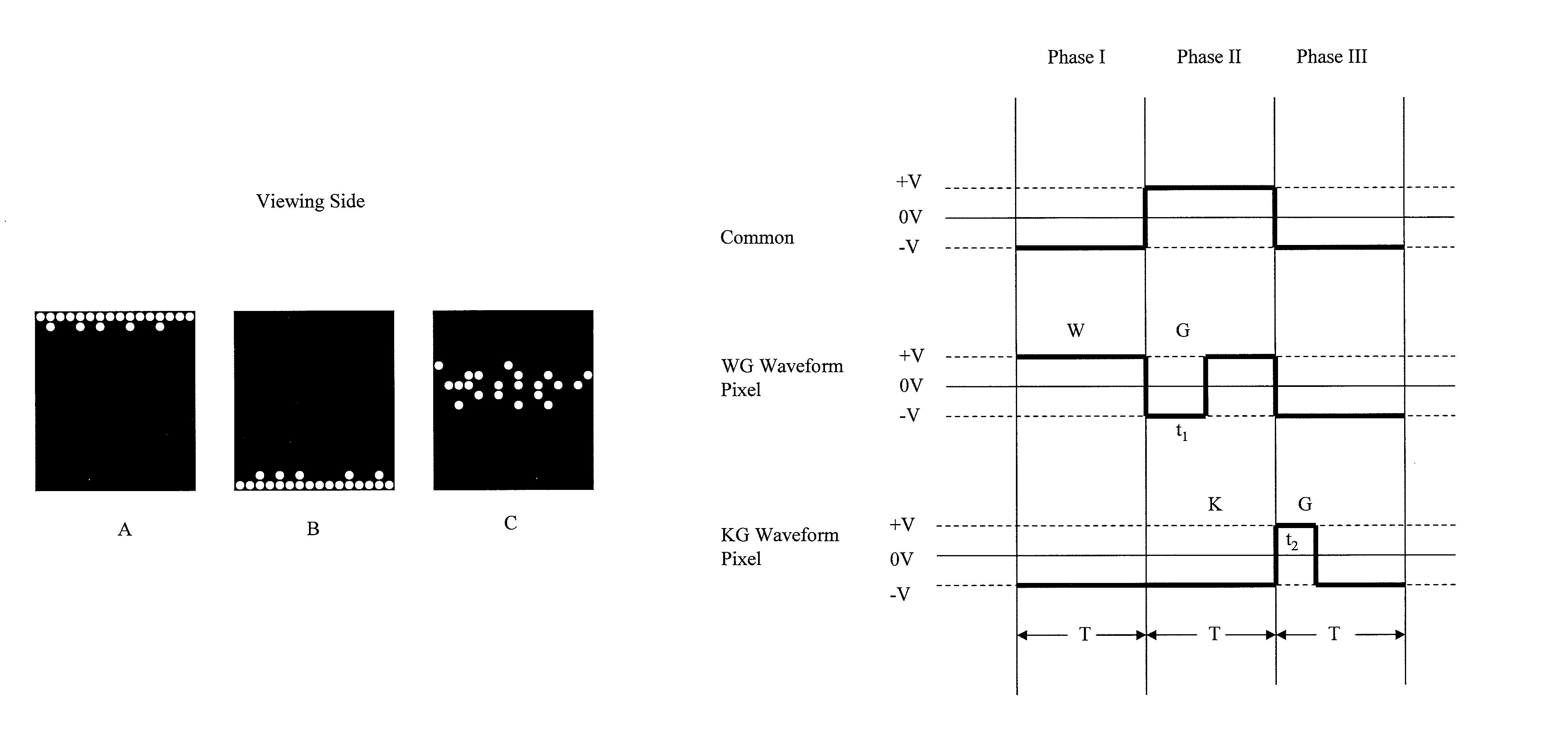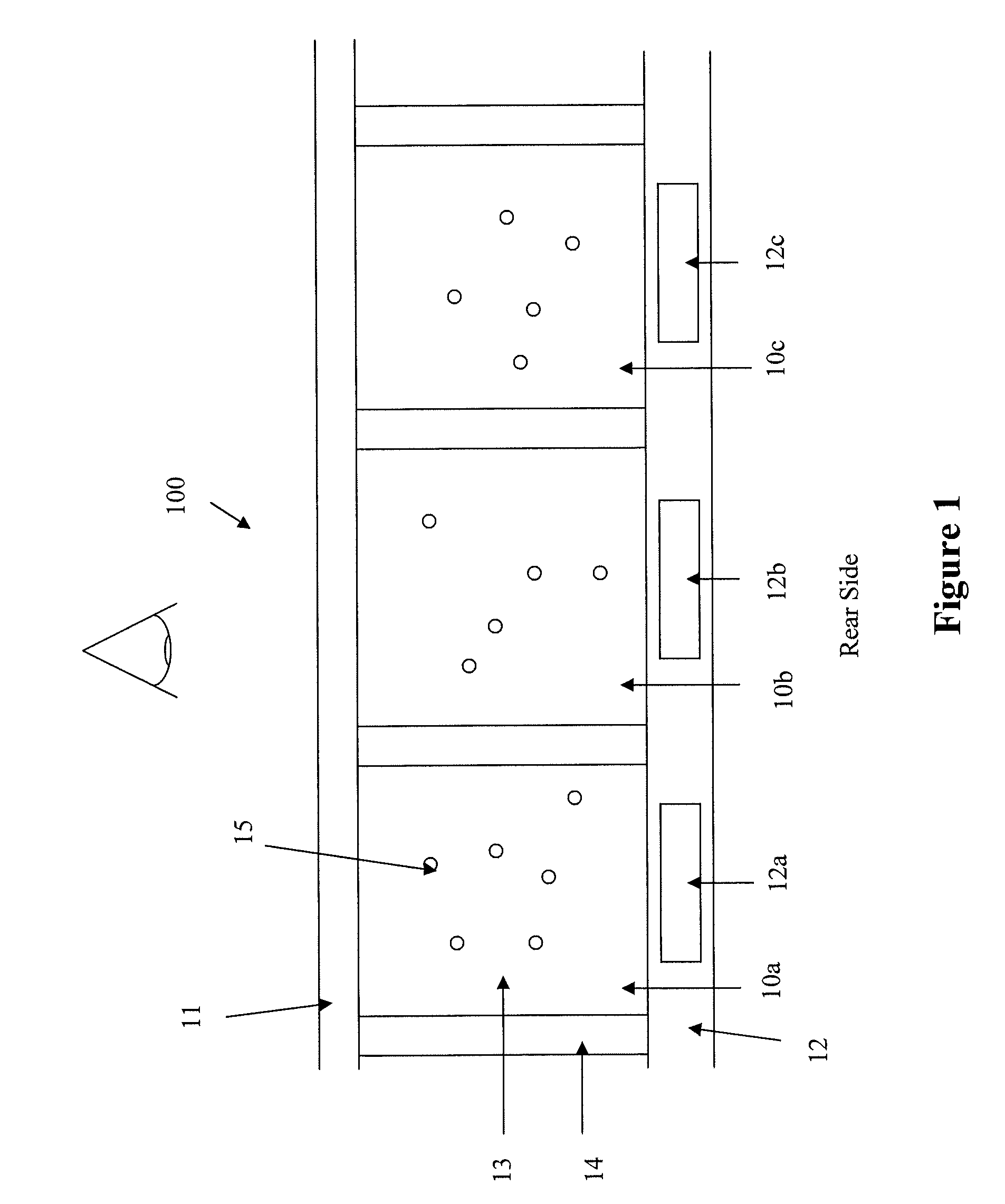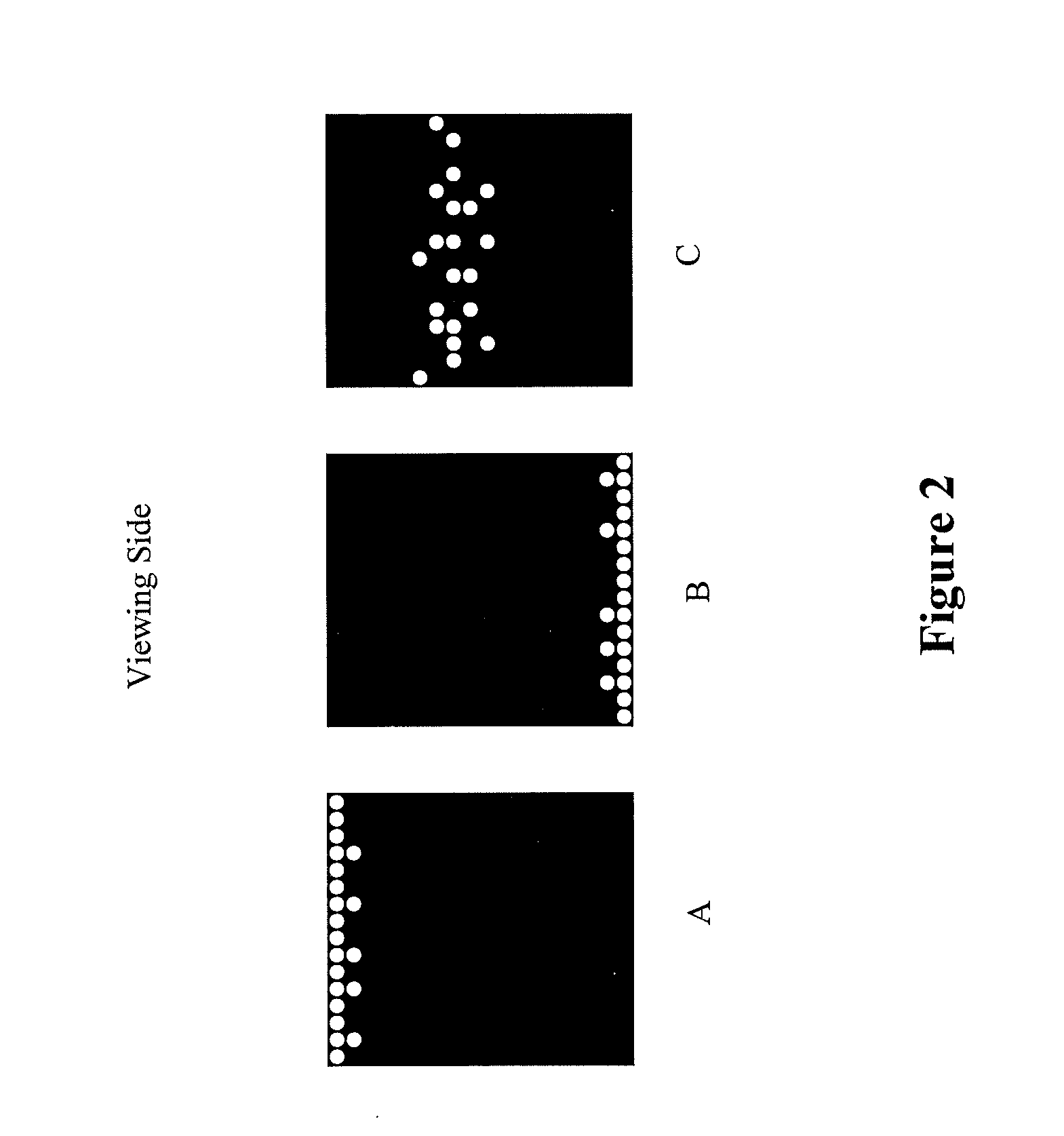Spatially combined waveforms for electrophoretic displays
a technology of electrophoretic display and combined waveforms, which is applied in the field of electrophoretic display, can solve the problems of inability to accurately measure the temperature of the medium, the optical response speed of the display device may not remain constant, and the performance of the display (e.g., grey level) may not remain the sam
- Summary
- Abstract
- Description
- Claims
- Application Information
AI Technical Summary
Benefits of technology
Problems solved by technology
Method used
Image
Examples
Embodiment Construction
[0024]FIG. 1 illustrates an electrophoretic display (100) which may be driven by any of the driving methods presented herein. In FIG. 1, the electrophoretic display cells 10a, 10b, 10c, on the front viewing side indicated with a graphic eye, are provided with a common electrode 11 (which is usually transparent and therefore on the viewing side). On the opposing side (i.e., the rear side) of the electrophoretic display cells 10a, 10b and 10c, a substrate (12) includes discrete pixel electrodes 12a, 12b and 12c, respectively. Each of the pixel electrodes 12a, 12b and 12c defines an individual pixel of the electrophoretic display. However, in practice, a plurality of display cells (as a pixel) may be associated with one discrete pixel electrode.
[0025]It is also noted that the display device may be viewed from the rear side when the substrate 12 and the pixel electrodes are transparent.
[0026]An electrophoretic fluid 13 is filled in each of the electrophoretic display cells 10a, 10b and ...
PUM
 Login to View More
Login to View More Abstract
Description
Claims
Application Information
 Login to View More
Login to View More - R&D
- Intellectual Property
- Life Sciences
- Materials
- Tech Scout
- Unparalleled Data Quality
- Higher Quality Content
- 60% Fewer Hallucinations
Browse by: Latest US Patents, China's latest patents, Technical Efficacy Thesaurus, Application Domain, Technology Topic, Popular Technical Reports.
© 2025 PatSnap. All rights reserved.Legal|Privacy policy|Modern Slavery Act Transparency Statement|Sitemap|About US| Contact US: help@patsnap.com



